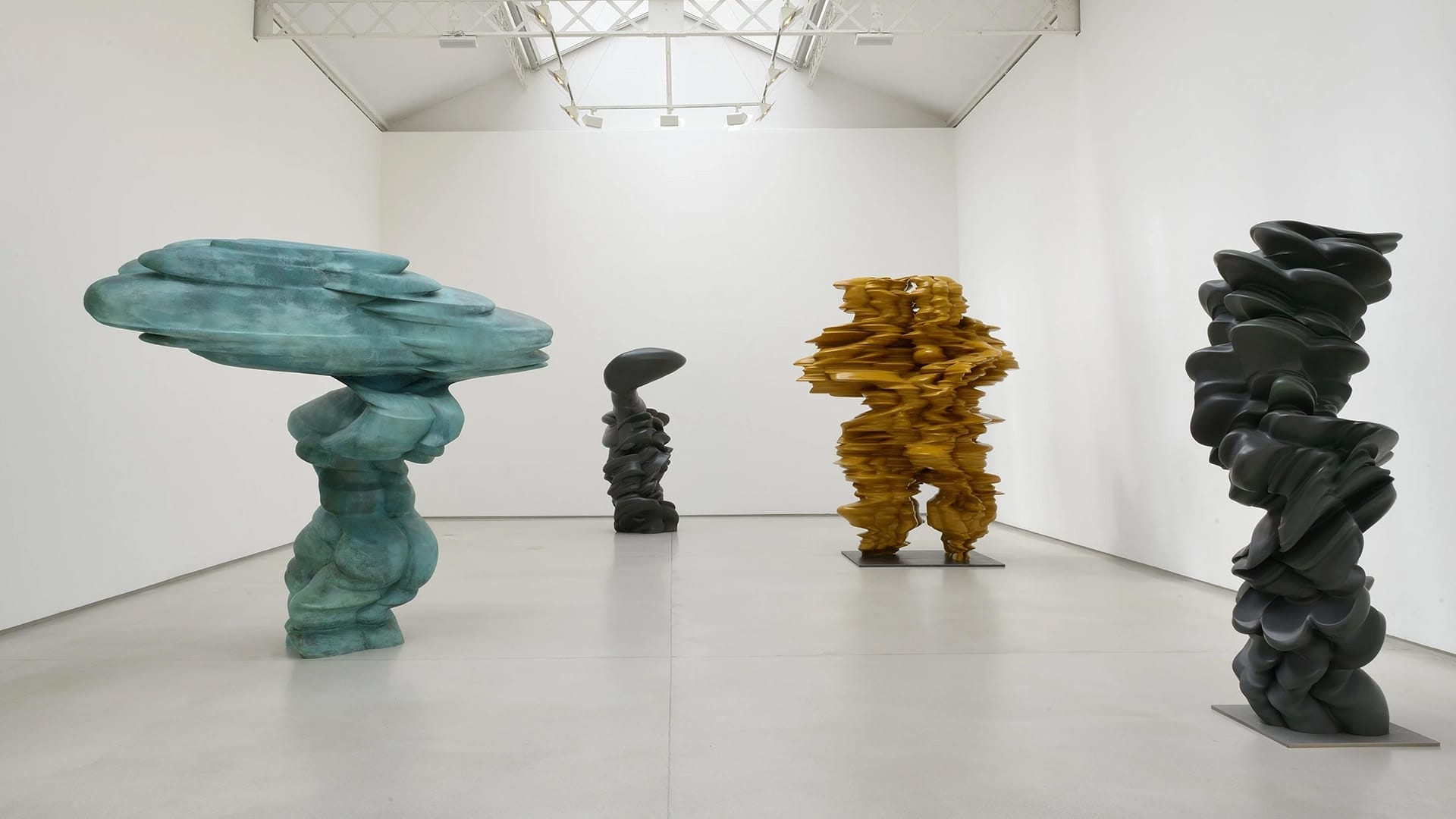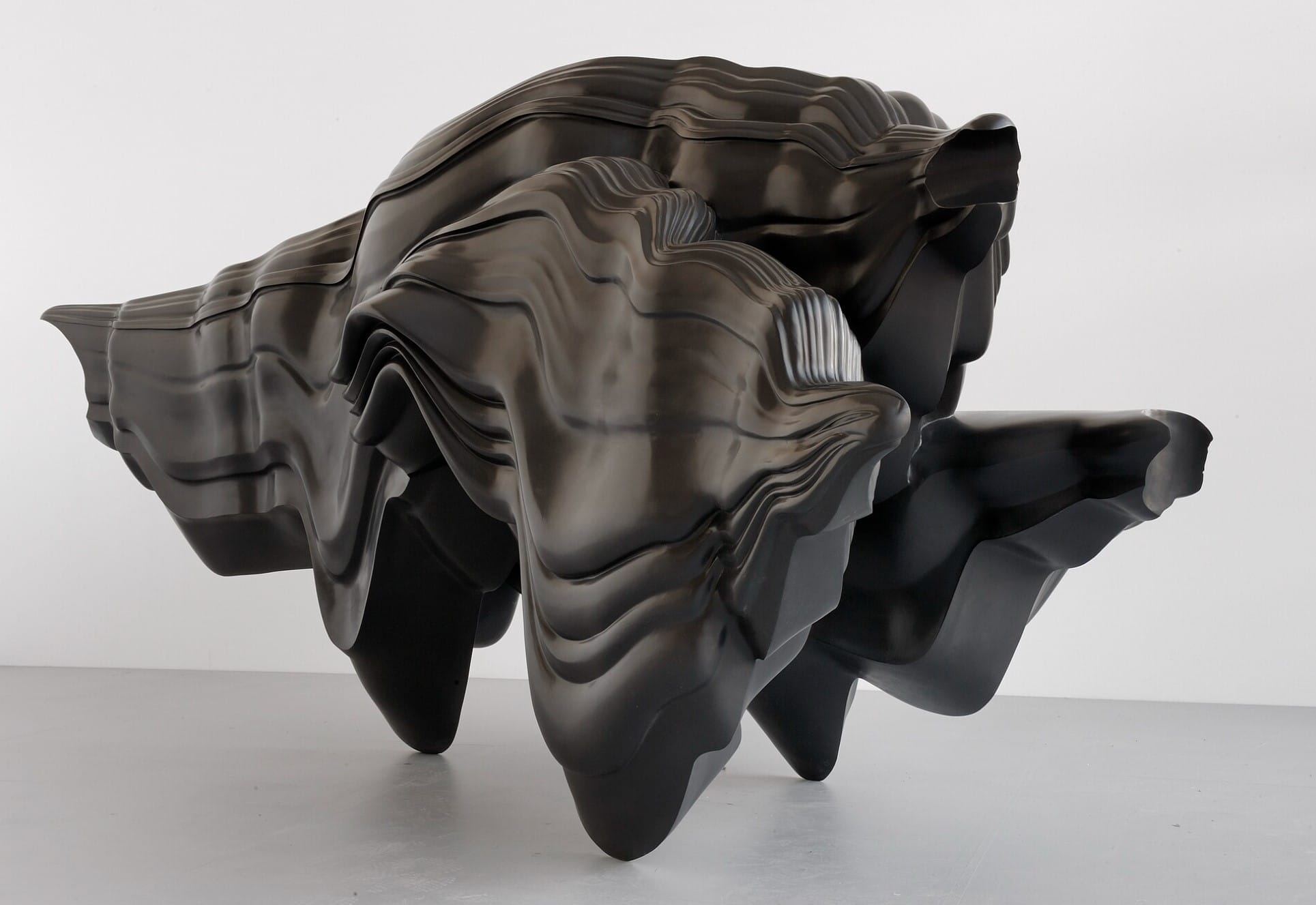
Tony Cragg: A Journey Through Form and Material
Tony Cragg, a pivotal figure in the landscape of modern sculpture, has revolutionized the domain through his inventive application of materials and a novel conception of form. Hailing from Liverpool, born in 1949, Cragg initiated his artistic process with a foundation in the sciences, particularly chemistry, studied at the National College in London. This scientific background has left an indelible mark on his artistic approach, endowing his sculptures with an extraordinary attention to detail and a deep exploration into the nature of different materials. In what ways does Cragg’s blend of scientific principles and artistic exploration challenge our traditional understanding of sculpture as an art form?
Cragg’s artistic trajectory took a decisive turn during his time at the Royal College of Art in London, where he began to forge his distinctive style. He moved beyond traditional sculptural materials like stone and bronze, embracing more unconventional media such as plastic, glass, and found objects. This shift not only established Cragg as a trailblazer in the art world but also mirrored a wider trend in contemporary art that favored experimentation and the questioning of established norms.
Throughout his illustrious career, Cragg has been lauded for his contributions to the art world, receiving numerous accolades, including the esteemed Turner Prize in 1988. His artworks have been showcased globally, gracing esteemed venues like the Tate Gallery in London and the Museum of Modern Art in New York. This widespread exhibition underscores his widespread appeal and the universal resonance of his artistic themes.

Materials and Methods: The Essence of Cragg’s Sculptures
Tony Cragg’s sculptural brilliance resides not only in the forms he molds but also in his groundbreaking use of materials. His approach to sculpture is deeply entrenched in a materialist philosophy, wherein he perceives materials as not just intriguing but “ultimately sublime”.
This philosophy is palpable in his eclectic use of materials, encompassing both traditional ones like bronze, steel, glass, wood, and stone, and more unconventional choices such as plastic, fiberglass, and found objects. From his early endeavors in the 1970s, Cragg has relentlessly pushed the boundaries of traditional sculpture. He possesses a unique flair for exploring and manipulating the physical and emotional characteristics of various materials, guiding the final form of his artworks. His creations often result from a symbiotic dialogue with these materials, sharply contrasting with the repetitive forms and simple geometries typical of modern industry. Cragg believes that different materials evoke distinct emotional responses in both the artist and the viewer, underscoring an intimate connection between material and creator.
One of his early pivotal works, “Stack” (1975), now a part of Tate Modern’s permanent collection, illustrates his innovative approach. This piece is an assembly of diverse objects, ranging from construction materials to old newspapers, all intricately stacked into a perfect cube. These works not only showcase Cragg’s technical skill but also reflect his taxonomical view of the world, considering man-made objects as “fossilized keys to a past time which is our present”.
In the 1980s, Tony Cragg’s artistic exploration underwent a pivotal transformation, leading him to the creation of two-dimensional arrangements of everyday objects, a direction prominently displayed in his work “Britain Seen from the North” (1981). This piece, composed of ordinary household items arranged to depict the map of Great Britain alongside a human figure, delves into the intricate relationship between the individual parts and the collective whole, a notion resonating with the principles of particle physics.
Cragg’s profound engagement with materials is inextricably linked to his fascination with the human psyche. He theorizes that all mental constructs originate from our interactions with the external world, suggesting that our perceptions of materials are transmuted into thoughts and language. He imagines each material encompassed within a “cloud or envelope of meaning,” which only becomes apparent when these materials intersect with our cognitive processes. This philosophical approach is not only central to his artistic practice but also transforms his sculptures into entities that are not solely physical in nature but are imbued with deep intellectual and emotional significance. How does Cragg’s interpretation of materials as carriers of meaning challenge our conventional understanding of the relationship between art, perception, and reality?

Influential Works: Highlights of a Storied Career
Tony Cragg’s illustrious career, spanning over five decades, is distinguished by a series of groundbreaking works that have notably influenced the direction of contemporary sculpture. His exceptional approach to material and form has culminated in a body of work characterized by both diversity and depth.
An early and notable piece, “Stack” (1975), exemplifies Cragg’s pioneering use of varied materials. This artwork, comprising an assortment of objects stacked into a perfect cube, mirrors Cragg’s fascination with the taxonomical aspects of the surrounding world.
Another seminal work is “Britain Seen from the North” (1981), where Cragg ingeniously arranged objects to depict the silhouette of Great Britain alongside a human figure. This piece is a testament to his inventive and thought-provoking approach.
A pivotal moment in Cragg’s career was his participation in the 43rd Venice Biennale in 1988, where he represented Britain. That same year, he garnered the prestigious Turner Prize, affirming his status as a leading figure in the realm of contemporary art.
The artist’s more recent exhibition, “Tony Cragg: Sculptures and Works on Paper”, held at The Gallery at Windsor in Vero Beach, Florida, offered a comprehensive showcase of his works in bronze, steel, glass, along with a selection of works on paper. This exhibition was a reflection of the cumulative nature of his artistic journey, where each new creation builds upon the learnings and experiences of the past. This ongoing evolution of his work continues to inspire and shape the landscape of modern sculpture.
The Philosophy Behind the Art: Understanding Cragg’s Vision
Tony Cragg’s oeuvre is a profound amalgamation of material experimentation and philosophical inquiry, where sculpture becomes a medium intertwining the tangible and the cerebral realms. His artistic impact is rooted in his ability to transmute cognitive and neurological responses into three-dimensional forms, thereby rendering abstract concepts into concrete manifestations.
At the heart of Cragg’s philosophy is the pivotal role of materials as dynamic entities capable of transforming and communicating meaning. He advocates for the notion that language and thought are inherently born from our engagement with the material world. In his interaction with diverse materials, he unravels a spectrum of meanings and associations, turning each material into a lexicon of potential expressions. This perspective transcends mere artistic ideology and forms a fundamental part of his worldview. Cragg envisages the human mind as a distinct dimension, with his sculptures emerging as tangible embodiments of his experiences and interactions within the material ambit.
In considering Cragg’s approach, one might ponder how his work challenges our traditional notions of the relationship between artist, material, and the observer. How do his sculptures, as physical embodiments of thought and material interaction, alter our understanding of the cognitive processes involved in artistic creation and perception?
Cragg’s work is imbued with deep philosophical reflections, particularly on the nature of reality and perception. He probes the existence of objects outside of observation, suggesting a profound link between consciousness and the material world. This contemplation is a cornerstone of his creative process, where his sculptures arise not from randomness or abstraction but from careful planning and a thorough comprehension of the materials at hand.
In his sculptures, Cragg moves away from merely replicating familiar shapes, opting instead to investigate the intrinsic structure of materials. This process leads to the creation of objects that defy conventional categorization, standing as unique forms that challenge the viewer’s understanding and perception.
Geometry is a vital component in Cragg’s work. He considers geometric shapes as a logical method to make sense of and anticipate the world. His sculptures often play with and subvert geometric norms, creating an intriguing balance between rationality and emotion. The hands-on nature of his sculptural practice is crucial in uncovering the ‘presence’ of a piece, a characteristic he believes is revealed through the act of creation.
The evolution of material use in Cragg’s sculptures mirrors his continuous experimental approach. From his initial use of found materials, influenced by movements like Arte Povera and Pop Art, to his later works that incorporate a broader array of mediums, his artistic path has been dedicated to probing the physical world and expressing the intricate, sublime qualities of different materials.
Cragg’s work encourages a reevaluation of our engagement with the material world, inviting contemplation of deeper, often overlooked aspects of existence. His sculptures extend beyond mere aesthetic objects; they are gateways to a world rich in thought, emotion, and philosophical exploration. In grasping Cragg’s vision, we obtain insights not only into his art but into the very nature of reality, as seen through the eyes of one of the most forward-thinking contemporary sculptors.

Tony Cragg Today: His Impact and Legacy in Contemporary Art
Tony Cragg’s contribution to contemporary art is immense and multifaceted. Beginning in the late 1970s and evolving through the decades, Cragg has transitioned from being a pivotal figure in the New British Sculpture movement to a globally celebrated artist, renowned for his novel use of materials and distinctive sculptural forms. His work, consistently showcased in international exhibitions, including recent shows in Denmark, Italy, Munich, and Berlin, underscores his unceasing innovation and technical mastery.
Cragg’s sculptures are not only visually compelling but also often embody social and political themes. In the early stages of his career, his works resonated with the ethos of the British punk revolution, encapsulating elements reflective of the social unrest and political dynamics of that era. His enduring relevance is underscored by his adaptability and response to the evolving artistic milieu, all the while maintaining a unique voice.
A crucial element of Cragg’s legacy is his role in art education. For over three decades, his significant presence at the Düsseldorf Academy, including a tenure as Director, has profoundly impacted the visual arts and fostered Anglo-German cultural exchanges.
His recent creations, such as those in the “Skulls” and “Hedges” series, exemplify his expertise in crafting sculptures that challenge traditional perceptions of form and material. These works, noted for their intricate designs and complex internal structures, reflect Cragg’s ongoing investigation into the interplay between natural and artificial forms, as well as the internal and external forces that mold them.
Cragg’s sculptures transcend mere physical objects; they represent a conversation between the artist, the material, and the observer. They encourage reflection and interaction, presenting various layers for interpretation. His works, held in major museum collections worldwide, highlight his profound influence on the realm of contemporary sculpture.
Tony Cragg’s influence extends well beyond the boundaries of his sculptural works, as he has fundamentally redefined the concept of sculpture itself. His innovative approach has expanded the limits of what materials and forms can convey in the realm of sculpture. His creations not only stimulate but also challenge, solidifying his position as an essential figure in the narrative of contemporary art.
Marked by a trajectory of continuous innovation, technical prowess, and a profound philosophical understanding of materials, Cragg’s career has left an indelible mark on the landscape of contemporary art. His sculptures, educational pursuits, and ongoing projects do not merely reflect his personal artistic evolution; they also mirror the dynamic and ever-evolving nature of modern sculpture. His legacy is one of relentless exploration and challenge, reenvisioning traditional notions of form and material, and serving as an inspiration to future generations of artists and art enthusiasts.
In contemplating Cragg’s extensive career and its impact, one might consider how his redefinition of sculptural norms influences our understanding of the evolution of contemporary art.
fakewhale
Founded in 2021, Fakewhale advocates the digital art market's evolution. Viewing NFT technology as a container for art, and leveraging the expansive scope of digital culture, Fakewhale strives to shape a new ecosystem in which art and technology become the starting point, rather than the final destination.
You may also like
9 – Finding Duke Dasher
Rockford, Illinois, United States Patrick Kibby had palmed the security guard on duty twenty dollars
Pixelord: A Journey Through Auditory and Visual Landscapes
Alexey Devyanin, also known as Pixelord, is a multi-disciplinary artist whose practice defies conven
Fakewhale Gallery Presents cornell_Box by Andy Duboc on Verse
On April 16th, 2025, Fakewhale presents “cornell_Box,” a Fakewhale Gallery generative art releas




